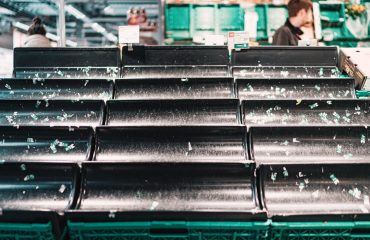Steel, a ubiquitous material in modern life, boasts incredible strength, durability, and versatility. Its applications span a vast spectrum, from towering skyscrapers to the intricate components of microelectronics. This visual gallery explores the diverse ways steel shapes our world, showcasing its enduring impact across various industries.
1. Steel in Construction: Skyscrapers Reaching for the Sky
(Imagine a high-resolution image here of a modern skyscraper, emphasizing the steel frame.) Steel’s high tensile strength and ability to withstand immense loads make it the backbone of modern construction. Skyscrapers, a testament to human ingenuity, heavily rely on steel frameworks for their structural integrity. These frameworks, often composed of complex interconnected beams and columns, provide the necessary support to defy gravity and create breathtaking structures that reach for the sky. The use of steel allows for taller, lighter, and more aesthetically pleasing designs compared to traditional materials like concrete or brick. Furthermore, advanced steel alloys offer enhanced resistance to fire and corrosion, crucial for ensuring the safety and longevity of these colossal buildings. The design and engineering of steel structures require meticulous planning and precision, utilizing sophisticated software and techniques to optimize performance and minimize material waste.
2. Steel’s Role in Infrastructure: Building the Backbone of Society
(Imagine a high-resolution image here of a large bridge, highlighting the steel components.) Beyond skyscrapers, steel forms the vital arteries of our infrastructure. Bridges, spanning vast distances and carrying immense traffic, are often constructed primarily from steel. Steel’s resilience to dynamic loads – forces imposed by moving vehicles and environmental factors – makes it ideal for these applications. From suspension bridges with their iconic cables and towers to sturdy girder bridges, steel ensures structural stability and longevity. Similarly, railway lines rely heavily on steel rails and track components, facilitating the efficient and safe transport of goods and people across continents. Steel’s durability and resistance to wear and tear are critical for maintaining the integrity of these vital transport networks. Furthermore, steel pipelines transport essential resources like oil and gas across vast distances, relying on the material’s strength and resistance to corrosion to ensure safe and reliable delivery.
3. Steel in Manufacturing: Precision and Power in Production
(Imagine a high-resolution image here of a factory floor with various steel components and machinery.) Steel’s malleability and ability to be formed into intricate shapes make it indispensable in manufacturing. From the robust chassis of automobiles to the precise components of machinery, steel’s versatility is unmatched. The automotive industry, for example, extensively utilizes high-strength steel alloys to create lightweight yet durable vehicles, improving fuel efficiency and enhancing safety. In the manufacturing of heavy machinery, steel’s strength and resistance to wear and tear are paramount. Steel components are crucial in the construction of industrial robots, presses, and other heavy-duty equipment, ensuring reliable and efficient operation in demanding environments. The precision machining of steel allows for the creation of complex components with tight tolerances, vital for the functionality of intricate machinery.
4. Steel in Everyday Objects: The Unsung Hero of Modern Life
(Imagine a collage of images here showcasing everyday objects made of steel: appliances, tools, furniture etc.) While often unseen, steel plays a significant role in our daily lives. Household appliances, from refrigerators and washing machines to ovens and microwaves, often incorporate steel components for durability and strength. Tools, ranging from simple screwdrivers to complex power tools, utilize steel for their cutting edges and structural integrity. Even seemingly mundane objects like furniture, cutlery, and bicycle frames often benefit from steel’s strength and longevity. The ubiquitous nature of steel in everyday objects highlights its versatility and affordability, making it a cornerstone of modern manufacturing and consumption.
5. The Future of Steel: Innovation and Sustainability
(Imagine an image here depicting sustainable steel production or innovative steel applications like high-speed rail.) The steel industry is constantly evolving, driven by the need for more sustainable and efficient production methods. Research and development are focusing on reducing the carbon footprint of steel production, exploring alternative energy sources and optimizing processes to minimize waste. Innovations in steel alloys are leading to the development of lighter, stronger, and more corrosion-resistant materials, further expanding the possibilities for steel applications. High-strength low-alloy (HSLA) steels, for example, are increasingly used in construction and automotive applications, offering improved performance with reduced weight. The future of steel is bright, driven by ongoing innovation and a commitment to sustainable practices.
This visual gallery only scratches the surface of steel’s vast applications. Its enduring strength, versatility, and affordability ensure its continued importance in shaping our world for generations to come.




